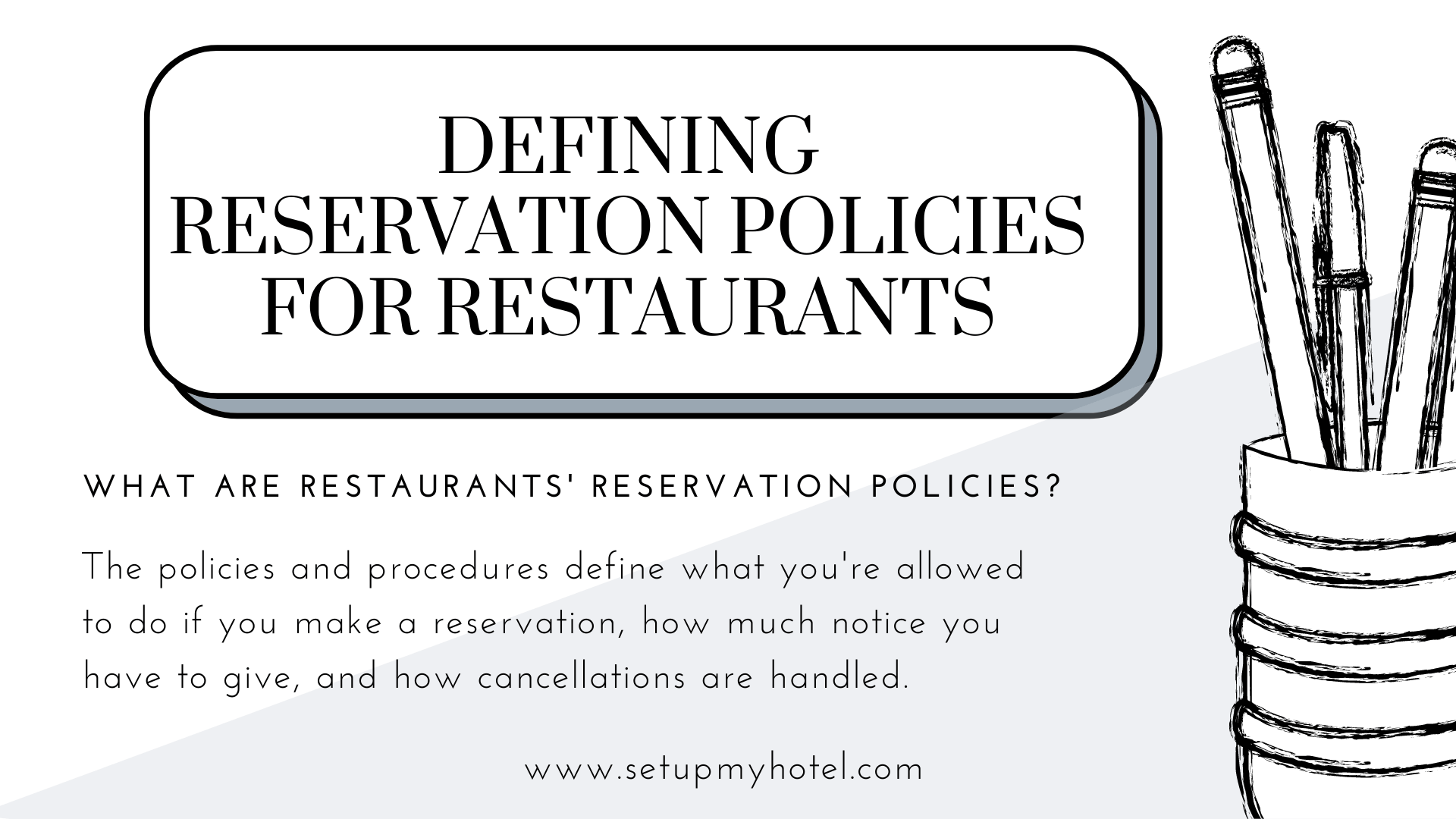Defining Reservation Policies in Restaurants | Coffee Shops
Introduction: What are hotel restaurants’ reservation policies?
Many hotels have a “reservation policy” which is the standard operating procedure for their restaurants. The policies and procedures define what you’re allowed to do if you make a reservation, how much notice you have to give, and how cancellations are handled.
Understanding how guests make a reservation at coffee shops and restaurants?
Most reservations are made directly with the restaurant, although online reservations are increasingly being made. If a restaurant takes reservations, its managers must decide on the number of tables to allocate to each time slot and determine the desired interval between reservations. The number and size of tables to allocate to each time slot depend on the mix of walk-in and reservation business and staffing levels.
Little research exists on the optimal number of tables to allocate to each time slot, but the focus should be on spreading demand throughout the meal period, and if possible, shifting demand to off-peak periods. The desired interval between reservations will be dictated according to the expected meal duration by party size.
What Are the Main Problems Faced with Restaurant Reservations?
Reservations are not without problems. The fact that a customer makes a reservation does not ensure that the customer will honor that reservation. Even if the customer shows up, there is no assurance that the customer will arrive on time or with the promised number of customers.
Because reservations are unpredictable, they must be managed either internally (with techniques not involving customers) or externally (involving customers). The primary internal approach is overbooking, while external methods include requiring deposits, guarantees, and the reconfirmation of reservations.
1. No-shows.
The primary internal approach to handling no-shows is overbooking, a technique used by most capacity-constrained service industries. Restaurants have typically not used overbooking to offset no-shows, but have instead relied on walk-in business as a buffer-although this strategy works only if enough walk-ins arrive at the right time.
The key to a successful overbooking policy is to obtain accurate information on no-shows, cancellations, and walk-in guests so that managers can set levels of overbooking that maintain an acceptable level of customer service.
A manager can use simple mathematical models to develop appropriate overbooking policies by time of year, day of week, and time of day. A good overbooking policy balances the cost of unused tables with the cost of inconveniencing or displacing a party-bearing in mind that a guest denied a reserved table may not be especially forgiving.
Along that line, restaurants that use overbooking must develop good internal methods for selecting and handling displaced guests. Operators in other industries base their displacement
decision on time of arrival, frequency of use, or perceived importance.
As I indicated above, credit card guarantees and deposits are external approaches to reservation management, as is calling customers to reconfirm reservations. Restaurants have long required a deposit for special meals, although the practice may meet with customer resistance during low-demand periods.
Similarly, many fine-dining restaurants in large cities have started to require a credit card guarantee for reservations on busy nights. Hotels and airlines have used guaranteed reservations for many years and have been able to reduce the number of no-shows.
One problem with credit-card guarantees in the restaurant industry, though, is that, unlike hoteliers who can require one night’s room rate to secure a reservation, restaurateurs lack knowledge on exactly how much the reserving party will spend on dinner and so cannot charge the specific price of the lost meal for no-shows.
Restaurants using credit-card guarantees have addressed this problem by charging guests who fail to honor their reservations a stated fee (typically, $10 to $25 per guest) Rather than require deposits or credit card guarantees, some restaurants use a less obtrusive, more service-oriented method of reducing no-shows.
These operators call their customers during the day to reconfirm their reservations for the evening to come. The call reminds the customer of the reservation and gives the customer the chance to cancel on the spot if need be.
The calls also create a reasonably solid forecast of the number of parties who intend to honour their reservation. For this approach to be successful, the incremental personnel cost associated with calling customers should be offset by the increased revenue associated with a reduction in no-shows.
2. Late-shows.
Restaurants can manage late shows by establishing and communicating maximum hold times for tables. When the reservation is made, customers can be informed that their table will be held for a specified period after the time of their reservation which time the table will be made available to any waiting party.
Such a policy, if communicated, can help reduce late shows and help protect the restaurant from the resulting idle capacity. A restaurant with a RevPASH of $30 (or $0.50 per minute) would, for instance, lose $60 during busy periods (i.e., when customers are waiting) for a 4-top that is held 30 minutes for a late-arriving party.
3. Short-shows.
Short-shows are more difficult to handle, especially, say, when the customer orders only appetizers at dinner time and then abruptly leaves. In that situation, after all, the customer honored the reservation, but merely left before making a “complete” purchase.
Theoretically, customers could be charged a per-person fee for short shows, but in practice, this policy would probably not be well accepted. Hotels face a similar problem when customers stay for a shorter time than they have reserved.
Early departure fees have met with customer resistance. Some hotels handle this problem by forecasting the percentage of guests who leave early and overbooking accordingly.
Conclusion: Given a choice, a no-reservation policy is probably preferable, but in many situations, particularly in fine-dining restaurants, customers expect to be able to make a reservation, so accepting reservations is often a market necessity.











